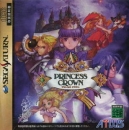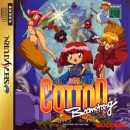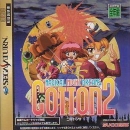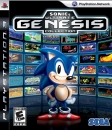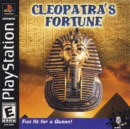I've thought a lot about this before, and since 2012, my opinions have changed ocassionally, but not the overall conclusion:
Without the PlayStation, Console Gaming would be in much worse shape than in real life, but not dead.
Intro
- Considering the number of commercial failures in the console market in the 90's, especially the 3DO and Jaguar, it would be unlikely for any huge company to step into the console arena for a while.
- Sega had shot themselves in the foot with their hardware, but not so much that victory was impossible. The Genesis itself was dated by the mid 90's, being a 1988 relese, but the CD attachment and growing 3rd party support gave it a bit of gas to work with. Since the 32X was largely made due to fear of other companies such as Sony and Nintendo making a next-gen leap, it would likely have never been released without Sony to worry about, especially considering how sluggish Nintendo was being with its new hardware. At most, 32X development would be done as a safety measure for the Jaguar and would be incorporated into the Saturn when Atari dropped the ball.
- Though Sega did not market to quite as wide an audience as Sony would with the PlayStation, they had already begun expanding the demographic back in the early 90's with the Genesis. Sega pushed for the semi-realistic sports games like Madden that EA is still selling today and developed and ported arcade games specifically made for Western and non-child demographics. Not to mention that Sega expanded into Latin America and Europe faster than Nintendo did. Even Sega's early rating system and adoption of the ESRB opened the way to older markets. Point is, Sega was already aiming at older markets, and would likely have continued onwards to keep their aging fanbase.
Saturn and N64 Launch
- The Saturn itself would likely be handled better than IRL, even with minimal changes in terms of hardware. Note that the Saturn sold about on par with the N64 in Japan despite its shorter life. Still short of the PS1, but Sega was getting stronger in Japan. Sega could still release the Saturn in November 1994 for Japan and not have to jump the gun in the American release, instead keeping it a September 1995 launch, especially since the N64 still wouldn't come out in the West for a while.
- With the Saturn released worldwide by the end of 1995, it would have a solid year to gain a following compared to the N64. Sega itself would be able to kickstart the platform with their arcade ports and some of the early 3D hits. Even in real life, Saturn games released by mid-96 included Virtua Fighter 1/2, Daytona USA, Sega Rally Championship, Virtua Cop, and Panzer Dragoon. Early PS1 hits like Ridge Racer and Tekken would either remain in the arcades or, in the case of Rayman, become Saturn icons.
- In general, the PS1 congregation of developers under Sony's platform would simply never occur, at least to the same extent. The N64 would lose support that the SNES had, but not necessarily at the same rate. Square and Enix, for example, might sacrifice the advantages of optical media just to avoid the JRPG-unfriendly practices of Sega in the West, especially since FF7 and DQ7 were both started as N64 games. Games like Resident Evil, Tomb Raider, and Metal Gear Solid would likely find homes on the Saturn, especially since Sega was already aiming at a teen and older audience. The Saturn would also be able to win at least some of the support the PS1 won from Western developers making PC games, though again not as much as the PS1 itself.
- Nintendo would likely release something similar to real life's N64 at a similar date and price point. I imagine that it would possibly be delayed a couple of months in at least one region or another, especially since Nintendo would want to retain more outside support such as launch games, but would still be released in Japan before 1996 ends. Early titles would still include Super Mario 64, Mario Kart 64, and Pilotwings 64, but the latter launch and third party support open up new possibilities. For example, FF7 was in development as early as 1994, intended for a Nintendo console as seen in that tech demo. Since the series was already getting increasingly popular in the west (and Sega was still catching up in Japan), it is very likely Square would grumble and make due with a 64 MB cartridge. If that sounds impossible, note that about a third of FF7's file size was FMV's. The result would be a more old-fashioned Final Fantasy, but one still in 3D. Perhaps the story would mostly take place in Midgar, something I heard was considered at one point, or combine regular and battle areas like Chrono Trigger.
Gen 5 and into the Future
- Gen 5 would likely be a tale of two parallel generations. On the Saturn, you have games for older audiences with voice acting and video, mixed with the beautiful 2D throwback. On the N64, you have games that are cartoonish, but can use the N64 hardware and analog stick to take full advantage of 3D worlds, with a big RPG every so often.
- Nintendo is able to reach similar hardware sales numbers with the N64 as with the SNES, about 50 million. The presence of Square and Enix games would not play a large role in most of the world, but would be huge in Japan, where the biggest PS1 games were Final Fantasy and Dragon Quest. Sales in the West would be still likely fall from the SNES, but the N64 dominance of the JRPG genre would balance that out.
- Sega would see a major leap from the Genesis to the Saturn, especially as third parties would turn to the Saturn more as the N64 reached its space limitations. The Saturn likely would not do much better in Japan than IRL, simply because the JRPG genre combined with Nintendo's library wins in that region circa 1996, but it makes great strides everywhere else.
- Even without FF7 and mascots on par with Nintendo's (The Saturn's 2D Prowess would likely help Rayman at the expense of Crash and Spyro and Sonic was MIA for a while), Sega would gain momentum in America thanks to its sports and racing games, a burgeoning genre. The already mentioned Tomb Raider, Resident Evil, and so on would be huge boons as well.
- Europe would be the real prize though. In real life, Europe did not latch onto consoles until the PS1. However, the Genesis was already the biggest exception to this rule, and even without Sony's infrastructure, Sega could make great strides in 90's Europe. Europe's PS1 fanbase flocked to driving games like Gran Turismo and Driver, a Sega specialty at the arcades. Licensed games, another traditional Sega strength, also were particular popular in Europe back in Gen 5. Without the titanic Sony blocking their path, Sega could easily double their Genesis-era presence with the Saturn.
- In total, I expect that the Saturn would have sold similarly to the N64 worldwide, somewhere within 40 million to 60 million, but there would be an obvious divide by geography. Games meant primarily for Japanese audiences might only be released on the N64 and Western games only on the Saturn. PC/Console ports would stick mostly to and from the Saturn. That said, Gen 5 would sell about 100 million consoles in this scenario. That's only about 70% of the real life trio, but good enough for the industry.
Saturn 2
- Although the real Dreamcast was released in 1998, a Sega riding with a successful Saturn would milk it out a bit more. A worldwide release throughout 2000 seems possible, as it would give the Saturn 5 or 6 years of strong support.
- This version of the Dreamcast would likely be very different from the real deal.I will be calling this Sega console the Saturn 2 just because it is not really that much like the Dreamcast.
- The Dreamcast was built using less expensive hardware for its era than the Saturn, and in addition to the latter launch, this would likely create a more powerful machine. Think a possible $300 launch instead of a $200 launch. That said, the real Dreamcast already used parts similar to those found in a PC, and this could also make PC/Console porting easier on the Saturn 2. Extra attention would also be paid to Western markets where the Saturn was growing and could potentially compete with PC gaming as much as Nintendo. Games would probably be on DVD, which was cheaper in 2000 than 1998 and more in line with a slightly pricier product. Doubling as a DVD player or including backwards compatibility would also be possible, but not inevitable.
- After looking into the PC scene for notes, especially from 1997 to 1999, Sega would consider what kinds of games could or coould not work on the Saturn 2. The FPS genre, specifically multiplayer titles like Quake and Unreal, would be obvious, especially if Goldeneye 007 still comes to the N64. RTS games like Blizzard's works and Age of Empireswould not be feasible, but WRPG's like Diablo and Fallout would have potential in Sega's eyes. Slower simulation or turn-based strategy games could also be considered. This would affect the controller and online abilities of the Saturn 2.
- The Saturn 2 controller would probably be more complex than the Dreamcast's. Though the VMU would likely never exist, Sega would more than make up for it to make PC games playable. That means more than one menu button, another pair of shoulder buttons, a second anaog to replicate mouse control, and the old 6-face-button layout could all easily return. Since the Dreamcast targetted older players, an excess of input methods would not necessarily be seen as anathema. Online play could easily be closer to Xbox Live than what the Dreamcast used.
- A Saturn 2 launch in 2000 would undoubtedly be a strong one.
TBC











































